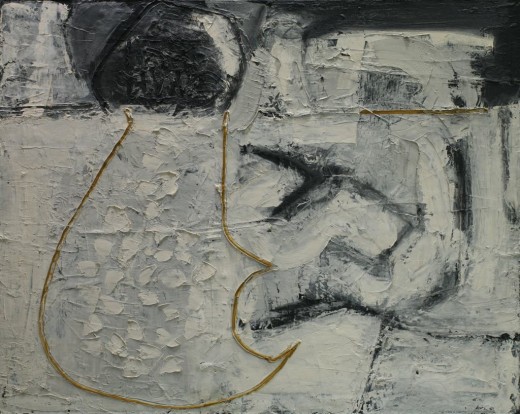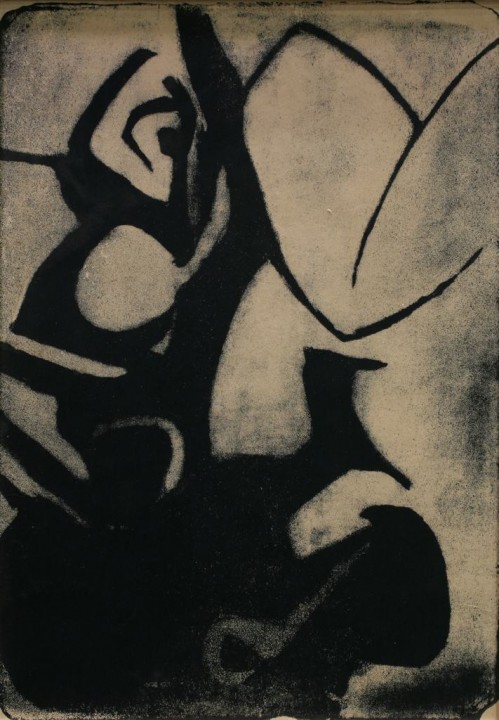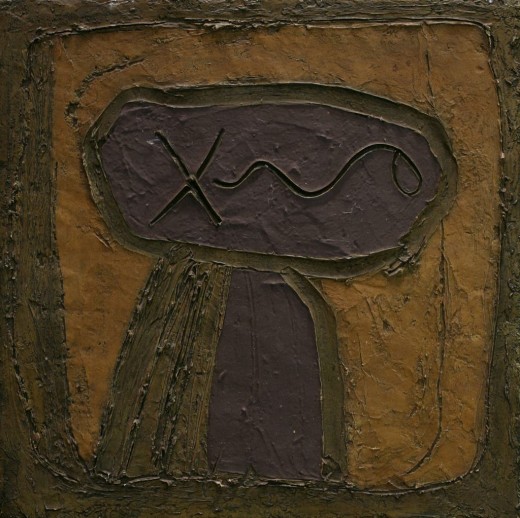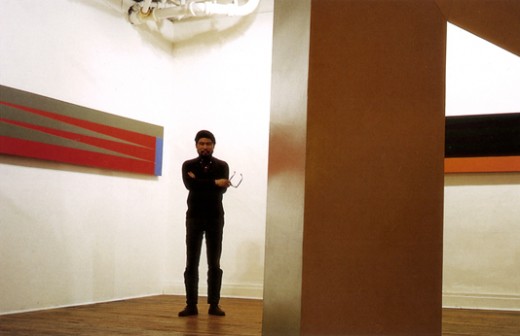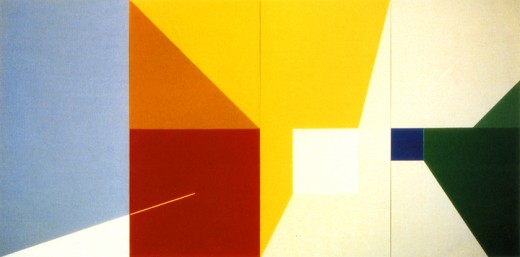
Four Seasons (1980)
Everything Pellucid: The Paintings of Leo Valledor
By Lawrence Rinder
I STILL LISTEN TO JAZZ. Though this musical form has been so driven to the edges of our culture that I sometimes feel like a fan of Gregorian Chants for doing so. I’m much too young to have known what it was like when jazz was being born and it felt like the heart of the future of America. But if there’s one message I get consistently from jazz it’s that anything is possible.
So I really envy Leo Valledor for growing up in the Fillmore District of San Francisco in the 1940’s and 50’s, where jazz was as alive and kicking as it ever would be – at least until urban “renewal” drove it out in the late 1950’s. Leo had a hard time as a kid, with parents who disappeared and God knows what kinds of racism to deal with. Jazz must have sounded like pure possibility to him. And abstract painting much the same.
We all know that at one time (especially in San Francisco) jazz, abstract expressionism and what’s known as “Beat” poetry were all part of one culture. It may be a cliché now but it was a powerful reality. One thing helped to explain the other: same thoughts, different languages. I can imagine how great Leo must have felt to show his art at the Six Gallery in 1955 (at the age of nineteen), the same year Ginsberg first read his culture-shaking poem, Howl.
Where Leo’s art gets hard for some is right where it ought to get easy. Abandoning the gestural language of abstract expressionism (which would linger on in the Bay Area for decades), he started to explore reduced palettes, geometric shapes, and the spatial dimension of color. This wasn’t the end of his dive into jazz-like spirit, it was the beginning. Geometry was his style and color was his tone.
When he moved to New York City in 1961, Leo found a new milieu, just as invigorating as the one he’d left in San Francisco: the Park Place Group. Named after a gallery that was to become the very first gallery in Soho, and which included like-minded artists Ed Ruda, Mark di Suvero, Peter Forakis, Robert Grosvenor Anthony Magar, Forrest Myers, Tamara Melcher, and Dean Fleming, The Park Place Group was an idiosyncratic bunch whose work, though abstract and geometric, didn’t accord with the prevailing Minimalist ethos of pure form.
Robert Smithson, who showed with Leo at Park Place Gallery in 1966, wrote that same year, “How could artists translate this verbal entropy, that is ‘ha-ha,’ into ‘solid-models’? Some of the Park Place artists seem to be researching this ‘curious’ condition. The order and disorder of the fourth dimension could be set between laughter and crystal-structural, as a device for unlimited speculation.” Smithson believed that what the Park Place artists were depicting with their orderly, abstract forms was laughter.
A different take on Leo’s art, also written in 1966, comes from the great New York School poet, Ted Berrigan: “Leo Valledor magically invokes moods of nature with painting that consists simply of a number of bands of color juxtaposed in a manner that seems intuitively correct. His only ‘trick,’ to zigzag one of the bands, somehow is responsible for all kinds of miracles, conjuring up, in different paintings, sky, a summer afternoon, twilight, blue sea, mist, and everything pellucid.”
Laughter and lucidity. How much better can it get? For reasons of which I’m unaware, Leo left New York and returned to San Francisco in 1968. He continued to live and work here until his death in 1989. As I write this, I’m looking at a page of reproductions of Leo’s paintings from the mid-1980’s: In the AM, Okasian, Hotosho, Fastpassin’. Each one perfect proof that Leo was living in the laughing, pellucid jazz-spirit ‘till the very end.
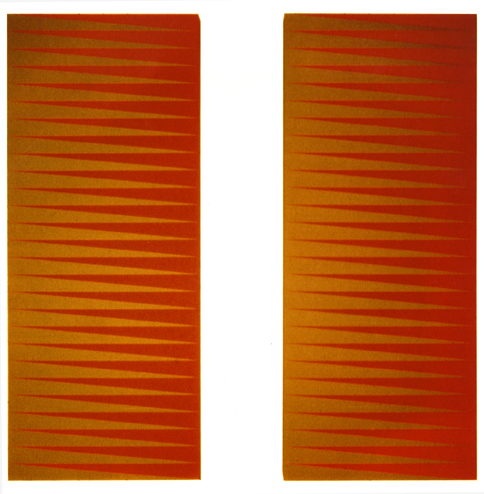
Echo (1967)
Download CV [pdf]
Read Leo Valledor’s son, Rio Valledor’s, ‘Zoot Zoot (A Song for my Father)’
Interview with Carlos Villa of San Francisco Art Institute about Leo Valledor
Keywords: Filipino-American, men, painting

